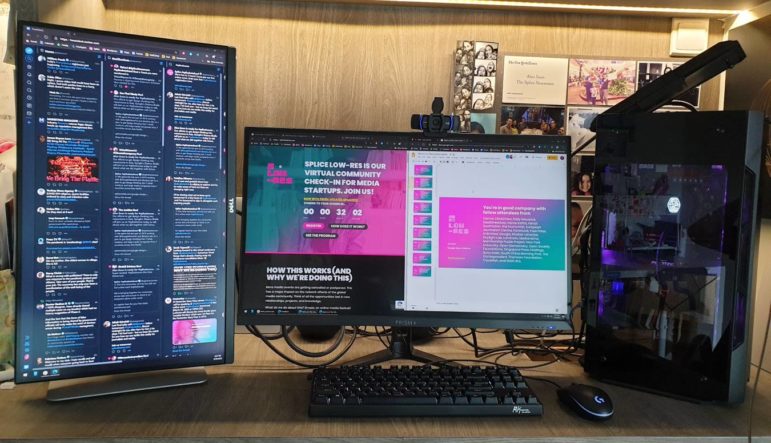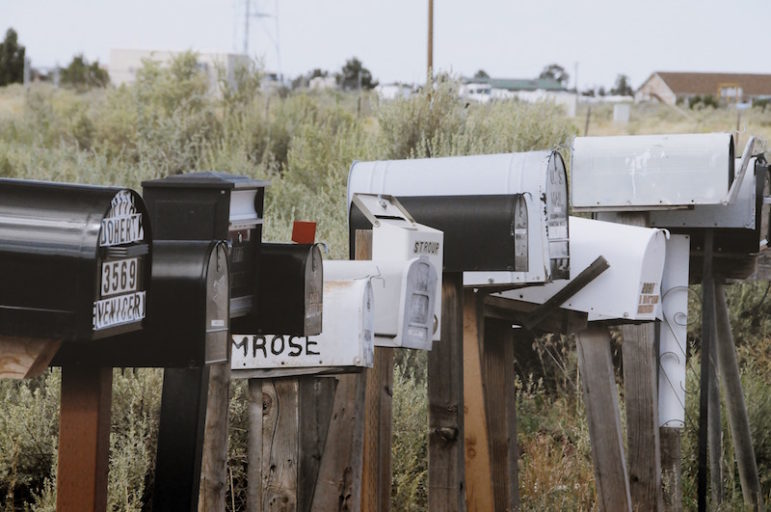

Making a Newsletter: What Happens Before Nonprofit Newsrooms Hit Send?
 The newsletter is having its moment.
The newsletter is having its moment.
In the hunt for effective ways to make money, nonprofit news organizations have discovered that newsletters provide a personalized, habit-forming vehicle for both compelling news and “donate” buttons.
As part of the Single Subject News Project at Harvard’s Shorenstein Center, a two-year initiative focused on building audience growth and engagement among outlets like The Hechinger Report, The Marshall Project and The War Horse, I work to understand how newsletters are a critical step in building loyalty that can lead to paying readers.
To peek under the hood of the news organizations’ newsletter workflows, I compiled survey data this past summer over a two-week period using Google Forms about eight news organizations’ internal structure and design for newsletters. The organizations are all non-profit, digital-only newsrooms, and often focus on single subjects such as education or gun violence.
Results from the survey of nonprofit news outlets led to two main takeaways:
The newsletter is an increasingly robust editorial product, treated with seriousness and dedication, that spans editorial, business and engagement departments in the newsroom. Each newsletter has at least one editorial review before publication, and in some cases involves draft sign-off by upper management, including those in the editor in chief, executive editor and editorial director roles.
The newsletter is an increasingly robust business product, as a majority of the news organizations polled produce and publish three or more newsletters, and seven plan to develop more in the year ahead.
In short, prepare yourself for more newsletters. For news outlets we spoke to, they’re becoming a discrete, standalone editorial product.
One of the organizations participating in the Shorenstein Center’s research is The Trace, a nonprofit news organization that focuses its reporting on gun violence in the United States. Its editorial director and managing director, James Burnett, told us, “The metabolism and velocity that goes into the editorial content of a great newsletter is distinct from the business-side work of building your email list and increasing subscriber donations. The editorial newsletter workflows are driven by the news cycle; the business workflows require time outside the demands of news deadlines. It’s a lot to fold into a single position.”
Lexicon here is interesting.
Half of organizations surveyed described newsletters’ place in the organization charts as sitting among the “audience” team, or “engagement” team or “digital team,” while the rest used “editorial” or “newsroom” labels.
This highlights the in-between nature of newsletters. They are both editorial and business products and, unlike an advertisement or a news story, their place within news organizations is an open question. One could argue this makes newsletters a convincing mirror of the state of the industry today.
The newsletter developed in response to changing consumer habits (mobile! inboxes! niche audiences!) and was tacked onto a growing list of job responsibilities for journalists. It makes sense, especially in smaller organizations, that when it comes to workflow many people pitch in to produce a newsletter. In larger organizations, we found that it was more common to have one staff member, such as an engagement reporter, dedicated to the tent-pole newsletters.
The strategy and craft around the newsletter product often comes from a staffer with one foot in editorial and one foot in business. For instance, the engagement editor, a fairly new role in the newsroom, creates a new feedback loop among the reader, the editorial newsroom and the publisher.
This loop provides a faster, more iterative exchange between the engaged news consumer and the engaged news producer. With tools like direct emails and the data analytics showing statistics like open rates, making editorial choices can become more intimate and immediate, and more reflective of business interests. Other responsibilities for the engagement editor beyond spearheading newsletters may include cleaning email lists of inactive readers or setting up subscription advertisements on social networks.
According to our survey, news outlets dedicate between four to 58 hours per week producing newsletters. For three of the news orgs, it’s about 40 hours per week.
The wide variation appears to mirror the size of the news organizations. The more resources available, the more time is spent on the newsletters. The basic pattern for newsletter production is this: reporters, considered either news reporters or engagement reporters, compile the most newsworthy information; at least one editor reviews the copy; and often, at least across news organizations polled in our survey, upper management reviews the newsletter drafts.
High-quality editorial content is key to this process, whether the strategy is to keep readers inside the inbox or clicking out to the news website (according to our survey, it’s often both). When newsletters are engaging enough to keep readers coming back, these products widen the funnel of potential subscribers or donors.
No surprise here, good product design is also critical. Keeping the newsletter to a certain size, understanding the impact of images, and experimenting with interactive elements are all examples of powerful tools for successful newsletters.
This means adding product thinkers early into the workflow of the newsletter.
“We need more product thinking across the newsroom — thinking about audience, technology, resources, mission and business objectives,” said Becca Aaronson, director of product at Chalkbeat. Chalkbeat, a member of the Shorenstein cohort, is a nonprofit news organization that focuses on education. “A lot of newsrooms operate like everything is breaking news,” she said. “The newsletter and other digital projects require strategic long-term thinking. There are long-term implications, and newsrooms today need to connect all the dots.”
Connecting the dots among audience, mission and business objectives is a big part of Shorenstein Center’s Single Subject News project. You can read more about newsletters in a forthcoming email newsletter guide, a collaborative project among the Shorenstein Center, The Lenfest Institute for Journalism and Yellow Brim.
This post first appeared on the Shorenstein Center on Media, Politics and Public Policy’s Medium site and is cross-posted here with permission.
 Caroline Porter is a journalist and media strategist. She wrote this article as part of the Single Subject News Project, a research project of the Shorenstein Center on Media, Politics and Public Policy at the Harvard Kennedy School.
Caroline Porter is a journalist and media strategist. She wrote this article as part of the Single Subject News Project, a research project of the Shorenstein Center on Media, Politics and Public Policy at the Harvard Kennedy School.









